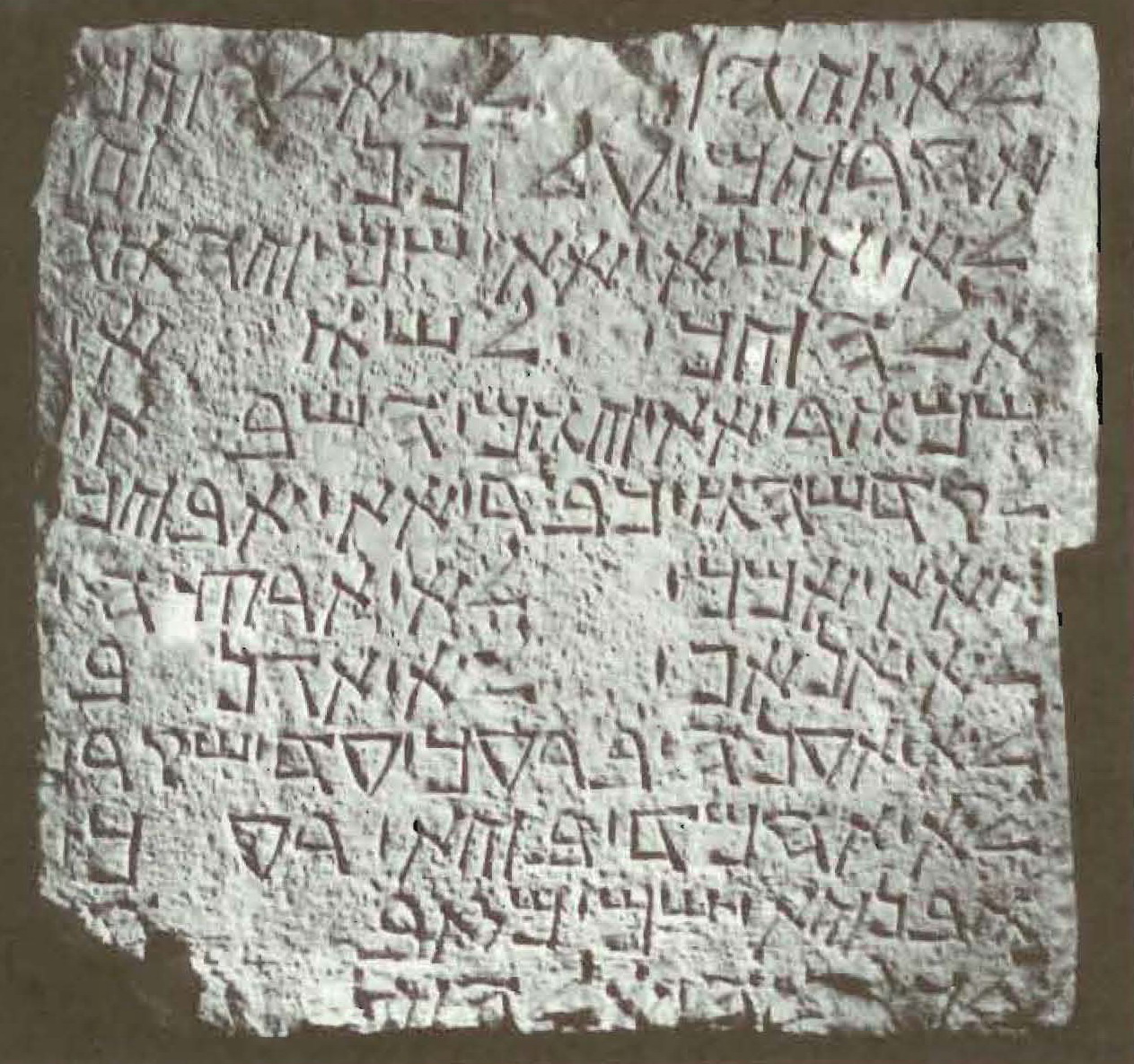In 1943 Israeli archaeologist Jacob Kaplan learned of a marble plaque with writing on it that was embedded in the ground in an Arab courtyard before the threshold to one of the rooms. The owner told Kaplan that the 22-by-24-inch plaque had been found by his father in Yavneh (on the outskirts of Tel Aviv) during the excavations in 1913 for the construction of the Palestine-Egypt railway.
Easily discernible on the plaque were engraved letters that Kaplan quickly recognized as Samaritan writing. The Samaritans broke off from the Jews hundreds of years before the Common Era, and they have preserved one of the earliest versions of the Pentateuch, which is their sole holy book. The Samaritan Pentateuch, as it is known, differs only in minor details from the version preserved by Jews. In two respects, however, the differences are significant. Where, in repeated passages, the rabbinic Pentateuch speaks of “the place that God will choose,” namely Jerusalem, the Samaritan Pentateuch speaks of “the place that God has chosen,” namely the Samaritan mountain of Mt. Gerizim, in the West Bank. That is God’s holy mountain, the Samaritans believe, and where they built their temple (see Deuteronomy 11-26–29; Joshua 8-30, 33). The other significant difference is that the Samaritan Pentateuch contains an additional commandment—an 11th commandment—namely, to worship on Mt. Gerizim.
Unfortunately, the constant traffic from the courtyard in the Arab house to the interior room before which the plaque was placed rubbed off some of the letters of the text. But enough is there to see that it must have come from a Samaritan synagogue. The first two lines have been subject to two different readings in the scholarly literature. Some say that the first two lines of the 20-line inscription are the standard memorial to a donor of the synagogue- “May Korach, the donor, may he be remembered for good forever.”
Another interpretation says that these two lines are actually a benediction praising God. Reading a letter or two in one way or the other produces quite different readings.
Two straight lines below this separate the dedication or benediction from the rest of the text, which summarizes the 11 Samaritan commandments.
The date of the inscription is also uncertain. It is difficult to date on paleographical grounds—that is, by the shape and form of the letters. It appears to date from sometime between the seventh century and 12th century of the Common Era.
When Kaplan died, his widow sold the plaque and it ended up in an antiquities shop, from which Rabbi Deutsch purchased it for his [Living Torah] museum.
Hershel Shanks, “The Eleven Commandments,” BAR 30-06, Nov-Dec 2004.
